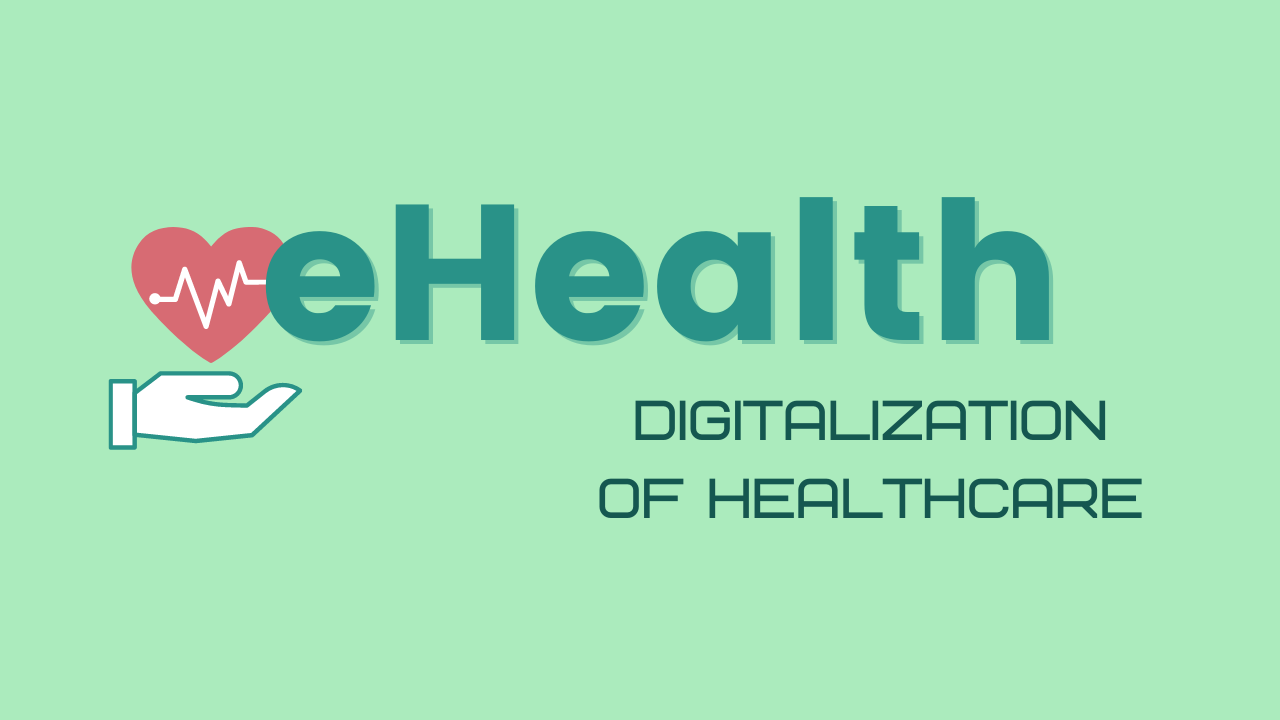eHealth
eHealth
Blog Article
eHealth
Overview
eHealth, often known as electronic wellbeing or healthcare technologies, refers back to the utilization of electronic conversation and information technology during the healthcare industry. It encompasses a wide array of technologies and apps geared toward improving the effectiveness, effectiveness, and excellent of healthcare shipping.
Objectives of eHealth
The leading goals of eHealth is usually summarized as follows:
Improved Use of Health care: By leveraging digital systems such as telemedicine and remote affected individual monitoring, eHealth aims to boost access to healthcare products and services for individuals living in distant spots or with restricted mobility.
Increased Quality of Care: By tools like electronic wellbeing records (EHRs) and clinical final decision support techniques (CDSS), eHealth seeks to reinforce the standard of care by facilitating accurate and timely details exchange between Health care professionals.
Affected person Empowerment: By delivering clients with usage of their healthcare information, customized wellbeing applications, and on line instructional resources, eHealth empowers people to take an active function in controlling their unique wellbeing.
Price tag Performance: Employing electronic platforms may help cut down administrative prices associated with paper-based systems while enabling efficient coordination between different stakeholders in the healthcare ecosystem.
Important Applications of eHealth
Several key purposes lead to obtaining the goals outlined above:
Digital Wellbeing Information (EHRs):
EHRs are digital variations of sufferers' health-related records which might be simply accessed by authorized Health care companies involved in a affected individual's treatment. They provide an extensive check out of a client's health-related history, lab success, drugs prescribed, allergies, and various appropriate clinical info.
Telemedicine:
Telemedicine involves providing Health care remotely by way of video conferencing or cell phone calls. It allows Physicians to refer to with patients who are unable to physically check out hospitals or clinics due to geographical constraints or mobility difficulties.
Mobile Overall health (mHealth) Applications:
mHealth apps are smartphone programs that present numerous healthcare products and services, including monitoring vital indicators, reminding clients to take drugs, furnishing access to wellness instruction materials, and facilitating conversation with healthcare suppliers.
Distant Affected individual Monitoring (RPM):
RPM allows healthcare pros to watch a affected individual's vital indicators and also other wellbeing parameters remotely using wearable devices or sensors. This enables early detection of health problems and timely interventions.
Wellness Data Trade (HIE):
HIE consists of the safe sharing of client facts throughout unique Health care companies, making certain seamless coordination and continuity of care in between providers in different settings.
Scientific Conclusion Support Systems (CDSS):
CDSS leverage synthetic intelligence algorithms to investigate clinical knowledge and aid healthcare experts in creating proof-centered selections with regards to prognosis, therapy designs, drug interactions, plus much more.
Overall health Wearables:
These are generally wearable gadgets like Health and fitness trackers or smartwatches that can obtain physiological knowledge on a person's exercising routines, heart fee patterns, slumber quality, and much more.
Benefits of eHealth
The adoption of eHealth features many Rewards for both persons and the overall Health care program:
Enhanced Effectiveness: eHealth streamlines administrative responsibilities by minimizing paperwork and enabling the Digital exchange of data amongst stakeholders linked to individual treatment.
Enhanced Interaction: Digital wellbeing resources aid efficient conversation between sufferers as well as their healthcare suppliers when also marketing collaboration between various professionals linked to a affected person's cure plan.
Entry to Specialised Treatment: Telemedicine allows sufferers residing in distant areas or underserved communities to consult with expert Medical practitioners who may not be physically current close by.
Well timed Interventions: As a result of remote monitoring techniques or cellular applications that give alerts or reminders for medication adherence or abide by-up appointments, eHealth helps avoid issues by facilitating early interventions.
Enhanced Client Results: By providing handy entry to health care facts on line together with customized overall health direction, eHealth empowers clients to actively have interaction in their own individual Health care and take care of Serious disorders correctly.
Challenges and Concerns
While the implementation of eHealth comes along with various Positive aspects, Furthermore, it provides problems and issues that need to be dealt with:
Privateness and Safety: Defending affected person data from unauthorized accessibility is an important concern during the electronic health and fitness landscape. Strong protection measures, compliant with related privateness rules, must be applied to make certain information confidentiality.
Interoperability: Different Health care methods and purposes may not often seamlessly communicate with each other due to deficiency of interoperability standards. Ensuring successful Trade of knowledge across platforms is vital for comprehensive affected person treatment.
Digital Divide: Not Everybody has equivalent access to digital systems or possesses the necessary electronic literacy skills expected for utilizing eHealth instruments successfully. Bridging the electronic divide becomes necessary to be certain equitable entry to Health care services.
Regulatory Compliance: The dynamic nature of know-how frequently surpasses current regulatory frameworks. To totally leverage the key benefits of eHealth though safeguarding affected individual rights, laws have to have to keep tempo with technological enhancements without stifling innovation.
Conclusion
eHealth performs a pivotal role in modernizing healthcare delivery by harnessing technological innovation for enhanced accessibility, excellent of care, individual empowerment, and value efficiency. The widespread adoption of electronic conversation equipment, telemedicine expert services, cell health apps, remote monitoring methods, and also other impressive alternatives contributes to a far more related and client-centered method of healthcare provision. Nonetheless, click here addressing issues connected with privacy safety, interoperability specifications compliance bridging inequality gaps in World wide web accessibility are essential measures toward achieving the entire opportunity of eHealth.
